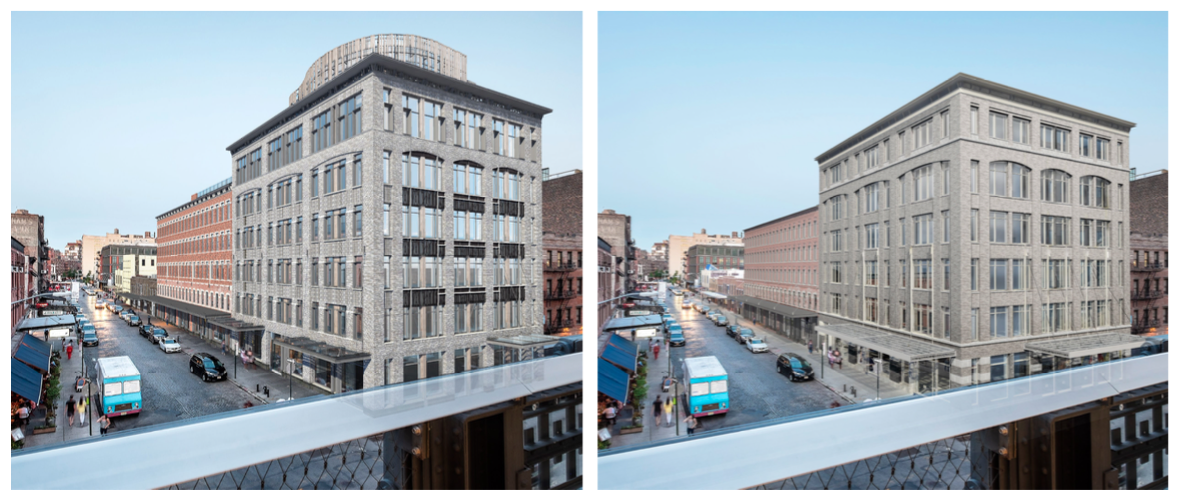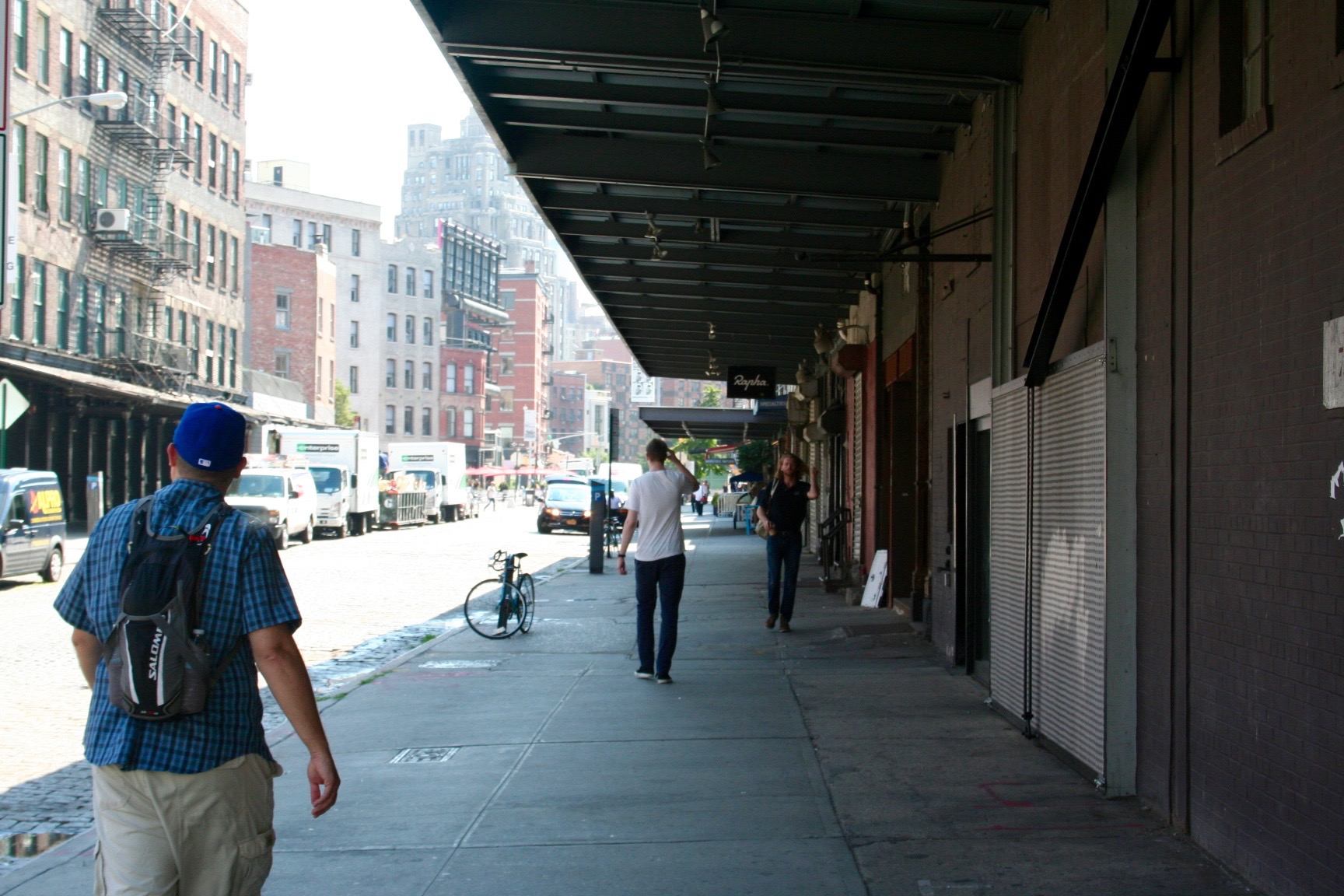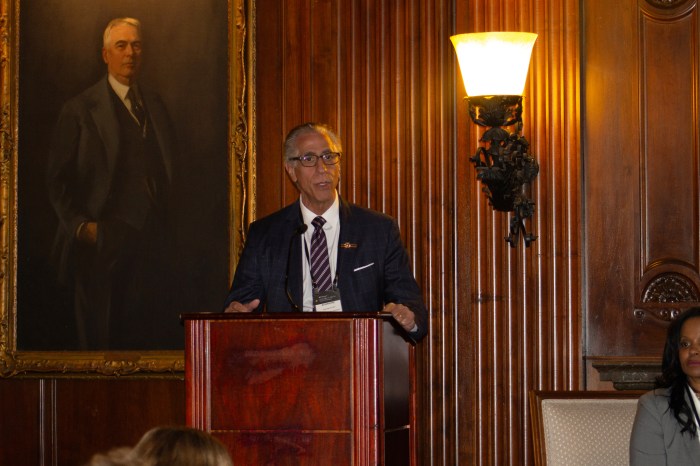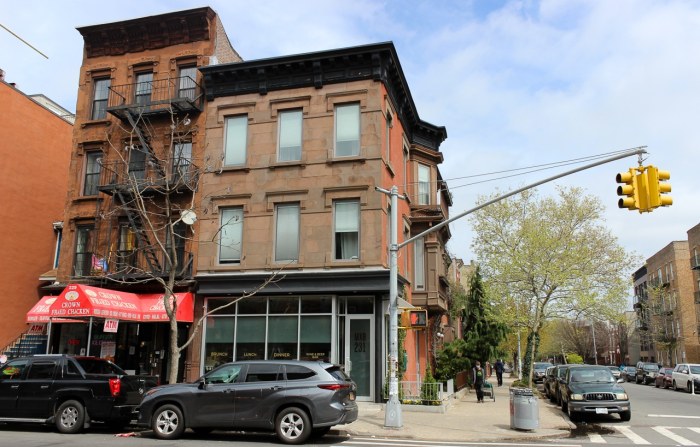
BY DENNIS LYNCH | A state judge last Thursday ordered that a developer hold off on work on a large-scale project in the southern end of the Gansevoort Market Historic District until the conclusion of a preservation group’s lawsuit against both the developer and the city’s Landmarks Preservation Commission for approving the project.
Aurora Capital Associates and William Gottlieb Real Estate want to demolish the one- and two-story buildings from 60-68 and 70-74 Gansevoort St. to build multistory commercial buildings that they have dubbed “Gansevoort Row.” They also plan to renovate 50 Gansevoort St. at the corner of Greenwich St., but that project is not included in the suit.
Now that will all have to wait until at least after the next hearing on March 8, when lawyers from both sides will argue their cases and present expert witnesses. The judge may make a decision in the weeks after that hearing, although the suit could drag on longer.
The preservation group Save Gansevoort is behind the suit and wants the judge to “annul, vacate and reverse” L.P.C.’s June 2016 decision that gave the developers the green light.
The group’s legal petition argued that allowing the project to go forward would destroy the Meat Market district’s historic character and resign it “to the status of a neighborhood that includes a hodgepodge of buildings of different scale.”
Michael Hiller, Save Gansevoort’s attorney, said he has three prominent witnesses, including Jay Shockley, who in 2003 wrote the roughly 140-page Gansevoort Market Historic District report for L.P.C. The report forms the basis for the area’s landmarking and meticulously breaks down the history and significance of each building in the district.

The buildings in question date from and just after 1938 “during the last major phase of development of the district,” when a bank foreclosed on 60-74 Gansevoort St., according to Schockley’s report. Back then, the new owners essentially chopped off the top floors of the tenement buildings there and converted the remaining one- and two-story buildings for wholesale, market and depot space.
The current developers argue that their proposed buildings restore that pre-1938 multistory character to the block. L.P.C. signed off on the design for an 82-foot-tall building and a 62-foot-tall building at the sites.
Hiller called the developers’ argument “laughable.” He noted that while the Meat Market area experienced four periods of change over a 175-year period, the “snapshot” of history that L.P.C. intended to preserve with its 2003 designation was “the period of rapid market industrialization in the first half of the 20th century,” not the tenement period before that.
“The relevance of the tenement buildings was that they were replaced and retrofitted as market buildings rather than demolished,” Hiller explained.
Shockley noted in his designation report that the building at 60-68 Gansevoort St., which “has significant fabric reflecting its 1940 alteration, contributes to the historically-mixed architectural character and varied uses — including market-related functions — of the Gansevoort Market Historic District…[and] further contributes to the visual cohesion of the district through its brick and stone facade and metal canopy.”
He deemed 70-74 Gansevoort St. as not being architecturally significant. However, Hiller said that does not preclude that structure from being historically significant.
L.P.C. approved the Aurora and William Gottlieb projects at each address with an 8-to-2 vote. The commission appeared to disagree somewhat with Hiller’s assessment. In a document following its approval, the commission noted that, “while the low-scale of this portion of the block is reflective of the third phase of district development, this block contains buildings which do not contribute to the character of the historic district, specifically the building at 70-74 Gansevoort Street.”
The commission also noted that the district already has some buildings at the scale of the proposed new buildings, and that to minimize visual impact, the project’s taller buildings were located away from the crucial intersection of Gansevoort and Little West 12th Sts. and Ninth Ave.
Zack Winestine, a leading member of Save Gansevoort, said he feels L.P.C. has become “increasingly loose and sloppy” in implementing the standards in its historic district designation reports. He worried that the Gansevoort St. development plan would pave the way for more projects like it in the historic district. He wants to set the opposite precedent with a win in court.
“Our hope is that, if we win, it will send a very strong signal,” he said. “The fact that there’s this degree of opposition and that we’ve been able to mount a serious legal case will hopefully send a message to Landmarks that they need to be more careful about making decisions that can’t be justified under the designation report.”
The development project isn’t popular with local politicians or Community Board 2. The community board unanimously voted down an earlier, more drastic redevelopment plan in 2015. Congressmember Jerrold Nadler, state Senator Brad Hoylman, Assemblymember Deborah Glick, Borough President Gale Brewer and Councilmember Corey Johnson have all opposed the development.
The development team behind the project is also behind the troubled 9-19 Ninth Ave. project less than a block away from Gansevoort St. That project was marred by the death of a construction worker in 2015 when a trench caved in, and issues with the Department of Buildings, which said the new building was too big and, as a result, may not get a certificate of occupancy.
The next hearing on the Gansevoort Row project will be at Manhattan State Supreme Court, at 60 Centre St., between Worth and Pearl Sts., Room 345, Wed., March 8, at 2:15 p.m.

















